Bumper yr for bringing Historic Rome again to life.
Historic Rome was a scorching subject in 2023, exploding as a development on TikTok and making headlines around the globe continuously all year long.
Here’s a round-up of a few of the largest Historic Rome tales from the Everlasting Metropolis in 2023.
Appian Method
The yr started with Italy confirming its bid to have the By way of Appia Antica inserted within the UNESCO World Heritage Listing, pending a call in summer time 2024.
The bid refers back to the full Appian Method route, from Rome to Brindisi, together with the By way of Traiana constructed by Emperor Trajan as an extension of the traditional Roman street from Beneveneto to Brindisi.
A style of By way of Appia Antica #Rome pic.twitter.com/7Zq1rw0slx— Needed in Rome (@wantedinrome) February 19, 2022
Relationship to 312 BC, the By way of Appia Antica is the primary and most vital of Roman roads and was recognized by the Romans as Regina viarum or “Queen of the Roads”.
Hercules
In January Rome archaeologists unearthed an historic statue of a determine within the guise of Hercules throughout sewage works in Parco Scott, across the second mile of the Appian Method.
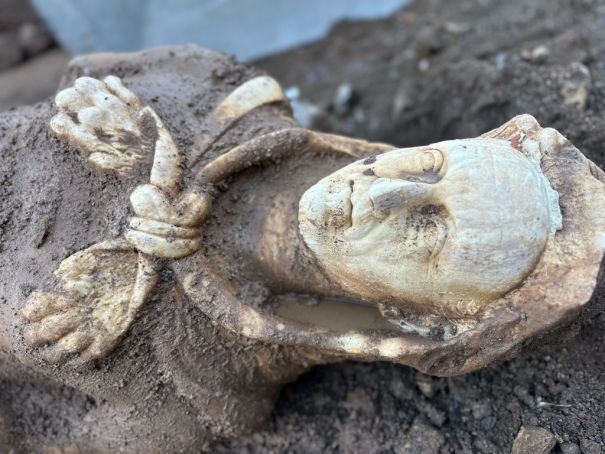
The life-size marble statue with the trademark membership and lion pores and skin of Hercules was subsequently recognized as a portrayal of Emperor Decius who dominated Rome from 249 to 251 AD.
Gold glass Roma
In February a uncommon illustration of the goddess Roma on historic gold glass emerged throughout development works for Rome’s third subway line.
Initially the bottom of a consuming glass, the invention featured a picture of the feminine deity – the personification of the town of Rome – sporting a helmet and carrying a spear.
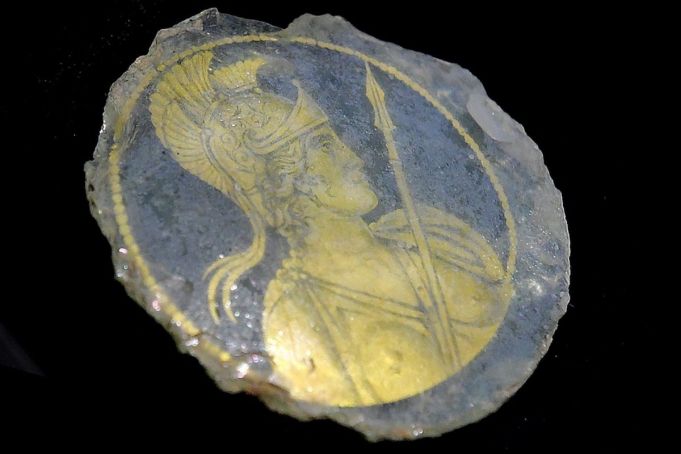
It was the primary time that any illustration of Roma in gold glass was ever discovered, in keeping with Rome archaeologist Simona Morretta, who described the artefact as “terribly refined”.
Gold glass is a luxurious type of glass the place an ornamental design in gold leaf is fused between two layers of glass. The vast majority of surviving Roman examples are cut-off bases of consuming glasses.
Colosseum raise
In Might the Colosseum unveiled an elevator to make the location extra accessible for individuals with mobility difficulties in addition to providing panoramic views over the Rome landmark.
The brand new raise, which permits guests to achieve the best ranges of the traditional amphitheatre, was inaugurated by Italy’s tradition minister Gennnaro Sangiuliano.
The Orchestra Italiana del Cinema performing music from The Gladiator soundtrack within the Colosseum because the solar goes down. Priceless. pic.twitter.com/h5L1hVnDqC— Needed in Rome (@wantedinrome) Might 30, 2023
The event was marked by the Orchestra Italiana del Cinema which carried out music from the soundtrack of The Gladiator together with a recorded message from the film’s star Russell Crowe.
Largo Argentina
In June Rome opened the archaeological web site in Largo di Torre Argentina to the general public for the primary time following a serious growth challenge sponsored by luxurious jeweller Bulgari.
The brand new itinerary affords data in English and Italian tracing the historical past of the traditional web site down via the centuries, from the Republican age to the imperial and mediaeval instances, as much as its rediscovery final century with the demolitions through the Fascist interval.
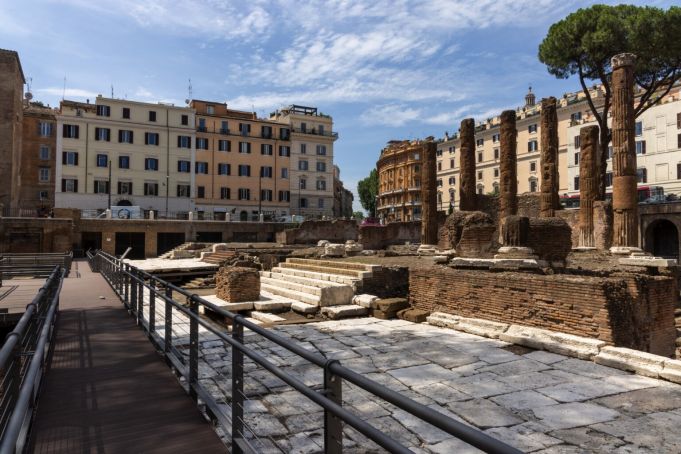
The so-called sacred space at Largo Argentina is finest generally known as the scene of Julius Caesar’s assassination, in addition to being residence to a cat sanctuary.
The brand new elevated walkways supply close-up views of the 4 Roman Republican temples, together with the round monument to the goddess of Fortune, and the stays of Pompey’s Theatre.
Theatre of Nero
In July Rome archaeologists introduced the invention of what’s believed to be the ruins of the Theatre of Nero whose location has at all times been a thriller.
The legendary non-public theatre was constructed by Emperor Nero, who reigned from 54-64 AD, nonetheless till now it was recognized solely from historic Roman texts.
The discover was made near St Peter’s Sq. within the grounds of Palazzo della Rovere, the house of the Equestrian Order of the Holy Sepulchre of Jerusalem, a historic Catholic order of knighthood below the safety of the Holy See.
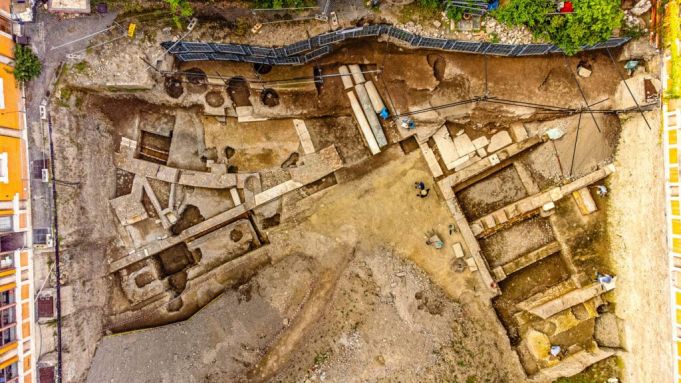
Hailing it as “exceptionally vital”, Rome’s archaeological superintendent Daniela Porro stated the invention testifies “to the presence of the Theatrum Neronis talked about in historic sources from Pliny to Suetonius and Tacitus, however thus far by no means discovered.”
Archaeologists unearthed a part of a hemicycle-shaped seating space, marble columns, gold-leaf plaster decorations and rooms believed to have been used to retailer theatre costumes and stage units.
Additionally discovered had been valuable first-century AD artefacts together with a two-faced Roman head of Janus, uncommon examples of Tenth-century glass colored goblets, and gadgets associated to pilgrims within the Center Ages together with a crucifix and rosary beads.
The excavations, which received underway in 2020, are a part of the redevelopment of the Renaissance palace as a future 4 Seasons Resort which reportedly plans to open in time for the Vatican’s Jubilee 2025.
Domus Tiberiana
The most important information of the yr got here in September with the reopening of the Domus Tiberiana imperial palace on Rome’s Palatine Hill, after virtually 50 years, following a serious restoration by the Colosseum Archaeological Park.
The imposing constructing, which sprawls over a four-hectare web site on the Palatine, was closed within the Nineteen Seventies as a consequence of critical structural issues triggered by excavations within the early twentieth century.
The monumental arched landmark restores an vital hyperlink between the Roman Discussion board and the Palatine Hill, with customer entry from the Farnese Gardens and the ramp of Domitian.
Rome’s Domus Tiberiana imperial palace on the Palatine Hill tonight forward of its reopening after 50 years and a serious restoration. Magical. pic.twitter.com/iSU54pHCQi— Needed in Rome (@wantedinrome) September 20, 2023
Though named after the second Roman emperor Tiberius, who reigned after Augustus from 14 to 37 AD, archaeological research have revealed that the constructing’s foundations had been laid by Nero in some unspecified time in the future after the fireplace of 64 AD or in tandem with the development of the Domus Aurea.
The Domus Tiberiana was expanded additional by the emperors Domitian and Hadrian, and within the eighth century Pope John VII selected the palace as his residence.
Throughout the Center Ages the domus drifted right into a state of full abandonment, with its constructing supplies pillaged, till the mid-Sixteenth century when the Farnese household introduced the residence again to life with their “backyard of delights”.
Contained in the magnificent Domus Tiberiana, newly restored with superb new museum areas. pic.twitter.com/v9ZL2D9NGc— Needed in Rome (@wantedinrome) September 20, 2023
In 1861 the location got here into the arms of French emperor Napoleon III whose excavations led to the invention of many of the historic buildings nonetheless seen.
Additional excavations had been carried out through the twentieth century nonetheless within the Nineteen Seventies the location was closed, as a consequence of critical threat of collapse, earlier than present process a long time of restoration work.
Rain Nymphaeum
In November the Ninfeo della Pioggia or Rain Nymphaeum on the Palatine Hill reopened to the general public following in depth restoration works by the Colosseum Archaeological Park.
The cave-like nymphaeum is a part of the frilly Farnese Gardens complicated, constructed by the highly effective Farnese household within the Sixteenth century, and is situated on the centre of the monumental ramp main as much as the Palatine from the Roman Discussion board.
New opening on Rome’s Palatine Hill.
The newly restored Rain Nymphaeum or Ninfeo della Pioggia on the Horti Farnesiani, closed to the general public for many years, reopens on 1 November. pic.twitter.com/9KYAe9LTea— Needed in Rome (@wantedinrome) October 26, 2023
Embellished with wall work and a grotto-style fountain manufactured from stone and stucco, the vaulted construction is among the most vital testimonies of Roman tradition from the late Renaissance and Baroque eras.
Roman domus
In December a newly-discovered Roman domus, unearthed between the Palatine Hill and the Roman Discussion board, was unveiled by the Italian tradition ministry.
The traditional construction, which dates to the late Republican age, was inbuilt at the least three phases between the second half of the second century BC and the top of the primary century BC.
The domus is situated within the space of the Horrea Agrippiana warehouse complicated alongside the Vicus Tuscus, a buying and selling avenue that linked the Roman Discussion board to the river port on the Tiber.
A spotlight of the newly-unearthed domus is a ‘rustic’ mosaic which has been described as “past examine” by tradition officers.
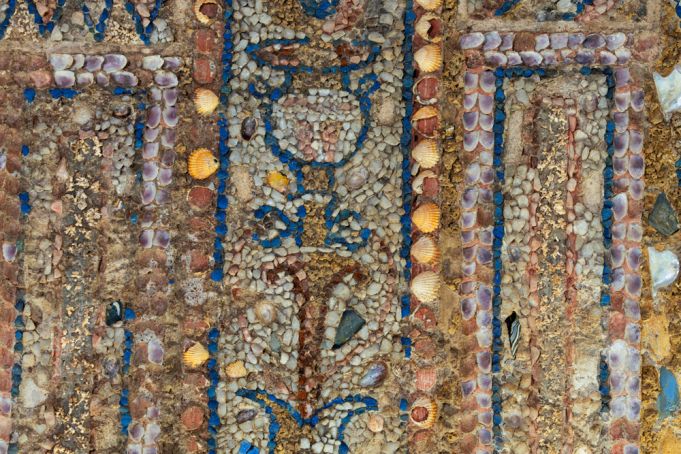
Relationship to the final a long time of the second century BC, the mosaic is constituted of sea shells, Egyptian blue tesserae, valuable glass, tiny fragments of marble and different colored stones.
The mosaic depicts figurative scenes of land and sea, together with weapons and ships, probably alluding to a army triumph linked to the proprietor of the domus, a nobleman probably a senator.
Centred round an atrium, the domus presents a “specus aestivus“, a grotto-style house that served as a banquet corridor in the summertime and was as soon as animated by spectacular water results.
Colosseum Archaeological Park director Alfonsina Russo stated the excavations are set to conclude early in 2024, stating: “We’ll work intensely to make this place, among the many most evocative of Historic Rome, accessible to the general public as quickly as potential.”
Article by Andy Devane. Cowl picture: Domus Tiberiana, photograph Needed in Rome.

